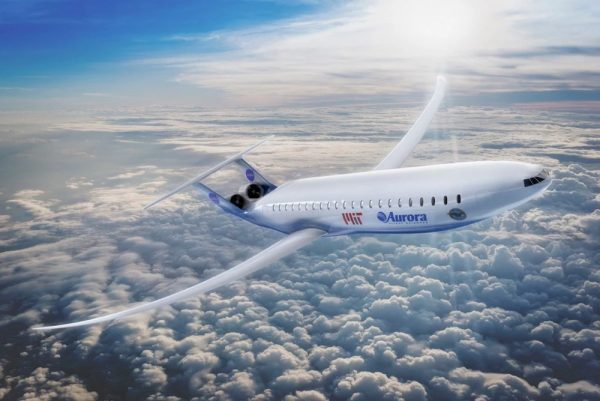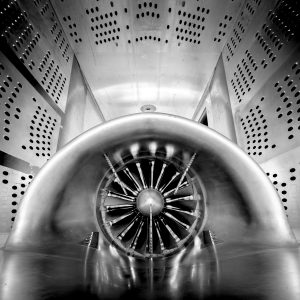Boundary Layer Ingestion Propulsion
The aviation industry has made tremendous strides in increasing the efficiency of today’s aircraft, especially by significantly reducing the fuel consumption of the aircraft engines. NASA's Glenn Research Center is working on propulsion technology to increase the fuel efficiency of future aircraft even more, reducing the overall cost to consumers and the impact on the environment.
The aviation industry has made tremendous strides in increasing the efficiency of today’s aircraft, especially by significantly reducing the fuel consumption of the aircraft engines. NASA’s Glenn Research Center is working on propulsion technology to increase the fuel efficiency of future aircraft even more, reducing the overall cost to consumers and the impact on the environment.
Overview

One of the ways to improve aircraft efficiency is to reduce the drag on the aircraft using the aircraft’s own engines. Engineers at NASA’s Glenn Research Center in Cleveland are testing a new kind of propulsion system using a principle called Boundary Layer Ingestion. Analytical studies have shown that this new technology has the potential to reduce the aircraft fuel burn by as much as 8.5% compared to aircraft flown today.
On today’s jet aircraft, the engines are typically located away from the aircraft’s body to avoid ingesting the layer of slower flowing air that develops along the aircraft’s surfaces, called the boundary layer. The new propulsor design, meaning the inlet and the fan, is embedded in the aircraft body at the back of the fuselage and ingests the slower boundary layer air flow, using it to generate the thrust needed to propel the aircraft through its mission. Using the slower boundary layer air means the engines do not have to work as hard, so their fuel consumption goes down. At the same time, the drag on the aircraft itself is reduced, since the engines “ingested” part of that drag, so the overall fuel efficiency of the aircraft is better and less thrust is needed by the aircraft to fly at the same speed. This means the overall aircraft efficiency is higher and less fuel is needed to complete the flight.
It sounds like a simple design change, but it’s actually quite challenging. Boundary layer air flow is highly distorted, and that distortion affects the way the fan performs and operates. These new designs require a stronger fan. These new propulsor designs require a specialized inlet to help straighten out the swirling flow before it gets to the fan, and a stronger, more durable fan to resist the constant pounding be applied by the flow distortion.
To address these challenges, NASA Glenn is testing a new Boundary Layer Ingesting Inlet / Distortion Tolerant Fan propulsor in its high-speed 8’ x 6’ Wind Tunnel. Designed by United Technologies Research Center with research assistance provided research conducted by Virginia Polytechnic and State University, and with funding from NASA, the rugged boundary layer ingesting (BLI) inlet-fan combination is the first of its kind ever to be tested.
Credits: NASA
Analytical studies have shown that boundary layer ingesting propulsors have the potential to improve aircraft fuel efficiency. The highly experimental tests required years of preparation. Many industry, NASA and academic experts contributed to the design and analysis of the propulsor. NASA Glenn engineers also modified the wind tunnel to accept the larger model and air turbine fan drive system, an active boundary layer control system, and a complex array of unique instrumentation to measure the characteristics of the air coming into the model and the aerodynamic performance of the fan and inlet.

Throughout testing, the BLI research team will change the wind speed and varies the boundary layer thickness and fan operation to see how these changes affect the propulsor’s performance, operability and structure. Results of the tests will be applicable to multiple cutting-edge aircraft designs being pursued by NASA and well as by its academic and private industry partners.
NASA plans to continue BLI propulsion technology research and development in the future. New fan designs will be tested in NASA Glenn facilities and reusing a portion of the test hardware shown in the photo above. The results from these tests will be applicable to cutting-edge aircraft designs being investigated by NASA and its academic and private industry partners.
